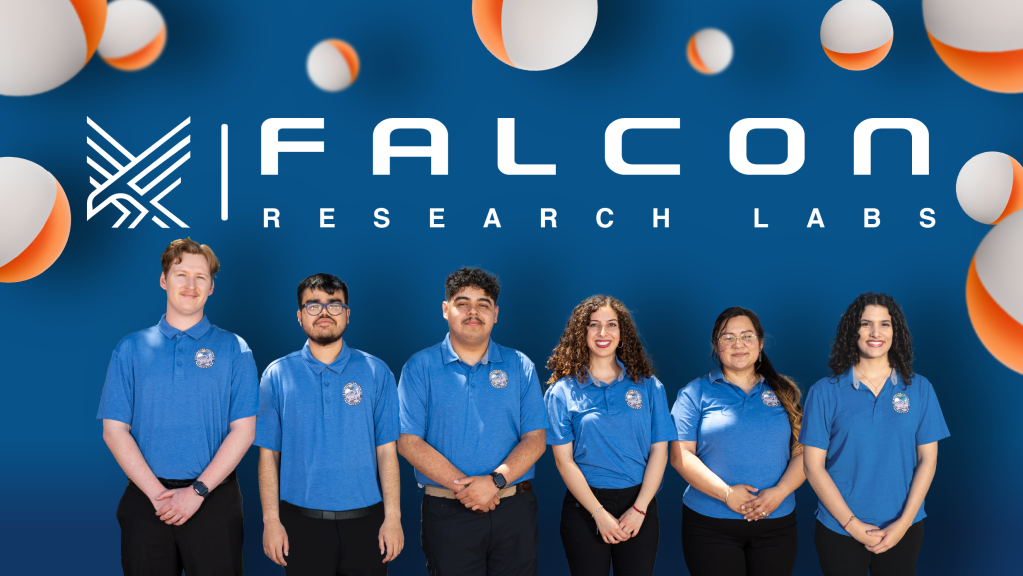Contents
- OSDR Frequently Asked Questions
- What is GeneLab, ALSDA, NBISC, BSP?
- What is Open Science Data Repository (OSDR)?
- Who sponsors OSDR?
- What data types does OSDR support?
- What services does OSDR offer?
- What sequencing standards does OSDR recommend?
- How to cite OSDR?
- How to acknowledge or cite OSDR services?
- How to cite datasets?
- How to cite visualizations from OSDR?
- In what format will I receive my data?
- How do I download my sequencing data?
- What is Biological Data Management Environment (BDME)?
- What is the Environmental Data Application (EDA)?
- What is RadLab?
- What is the Visualization (Viz) Portal?
- What is the GeneLab Dataset (GLDS)?
- What is the Life Sciences Dataset (LSDS)?
- What is a Research Data Submission Agreement (RDSA)?
- What are the Data Submission Guidelines?
- What datasets can I submit?
- Does my dataset need to be related to ISS research or does OSDR also host suborbital and ground results?
- How do I submit data?
- When will my data receive a study accession number?
- How do I modify a dataset?
- Right of first publication?
- Why should I deposit data in OSDR and not one of the other online repositories available?
- How can I access the Data Repository?
- How can I search for data?
- How do I download metadata and/or data files?
OSDR Frequently Asked Questions
What is GeneLab, ALSDA, NBISC, BSP?
GeneLab
GeneLab is an open-access resource that enables scientists to upload, store, share, search, and analyze omics (e.g. DNA, RNA, protein, and metabolites) data from spaceflight and analog experiments through the NASA Open Science Data Repository (OSDR). It facilitates information and data sharing, fosters innovation, and accelerates scientific discovery in space biology. GeneLab provides coordinated data sets and metadata, allowing users to gain comprehensive insights about the effects of the space environment on terrestrial biology and make novel discoveries that expand our understanding of biology and the fundamental building blocks of life. Read more about GeneLab.
ALSDA
The NASA Ames Life Sciences Data Archive (ALSDA) provides public access to physiological, phenotypic, bioimaging, video, behavioral, hardware, and environmental telemetry data from space-relevant experiments and missions through the NASA Open Science Data Repository (OSDR). Data is mostly from model organisms (rodents, plants, yeast, drosophila, microbes, etc.), but also from non-NASA human astronauts. The goal of ALSDA is to enable multi-modal and multi-hierarchical fundamental space life science data (phenotypic, physiological, behavioral, hardware, environmental telemetry; tabular, text, code, images, video; raw, processed) be reused toward basic science, applied science, and operational outcomes for space exploration and knowledge discovery. Read more about ALSDA.
NBISC
NBISC is a biorepository of non-human samples collected from NASA-funded spaceflight investigations and correlative ground studies. The purpose of NBISC is to receive, store, document, preserve, and make the collection available to the scientific community.
Since 1995, NBISC has fostered gravitational biology research by providing access to these rare and unique samples to maximize the scientific return. Samples not utilized by primary investigations are preserved and made available through an open-science approach. Historically, these samples have been used in a wide range of analyses, including histology, genomics, and transcriptomics. Read more about NBISC.
BSP
The NASA Space Biology Biospecimen Sharing Program (BSP) is based out of NASA Ames Research Center (ARC) and collects biospecimens to maximize the scientific return from biological spaceflight and associated ground investigations and to encourage and broaden participation from the scientific community in space biology-related research. Biospecimens are collected by trained personnel in accordance with the principles and guidelines presented in the Guide for the Care and Use of Laboratory Animals 8th edition (National Research Council, 2011) and the Care and Use of Animals NASA Procedural Requirements (NPR 8910.1D). These biospecimens are deposited into the NBISC biorepository. Read more about BSP.
What is Open Science Data Repository (OSDR)?
The NASA Open Science Data Repository (OSDR) enables access to space-related data from experiments and missions that investigate biological and health responses of terrestrial life to spaceflight. The goal of OSDR is to enable multi-modal and multi-hierarchical fundamental space life science data, including ‘omics, phenotypic, physiological, behavioral, hardware, and environmental data, to be reused toward basic science, applied science, and operational outcomes for space exploration and knowledge discovery. Read more about OSDR.
Who sponsors OSDR?
The Open Science Data Repository is developed and managed at NASA’s Ames Research Center. Science direction and project funding by NASA’s Division of Biological and Physical Sciences (BPS) under the Science Mission Directorate (SMD) at NASA Headquarters.
What data types does OSDR support?
OSDR accepts all omics and physiological/phenotypic/behavioral and imaging data from spaceflight and analogue studies with the below data file formats:
- CEL
- CID
- CSV
- DTA
- ETD
- Excel
- FASTA
- FASTQ
- GelML
- GTF/GFF3/VCF/BED
- HCD
- HDF4
- MGF
- MS2
- mzData
- mzML
- mzQuantML
- NetCDF
- pdb
- pdbnuc
- pdbnucseq
- pdbseq
- PKL
- RAW
- SAM
- SFF
- Spectra: .doc, .docx, .txt, .pdf, .tif formats
- spML
- Tab-delimited Text
What services does OSDR offer?
OSDR currently offers sample processing, sequencing, and data processing services for a variety of different organisms, tissue types, and omics data types. Please refer to this form for more detailed information and to obtain a quote.
What sequencing standards does OSDR recommend?
For more information, view the OSDR sequencing group recommended sequencing depth and standards for Total RNA sequencing.
How to cite OSDR?
To cite OSDR, refer to the latest NASA Open Science Data Repository publication:
Gebre S G, Scott R T, Saravia-Butler A M, Lopez D K, Sanders L M, and Costes S V, (2024). “NASA Open Science Data Repository: Open Science for Life in Space.” Nucleic Acids Research, 53(D1): D1697-D1710. https://doi.org/10.1093/nar/gkae1116.
How to acknowledge or cite OSDR services?
View the OSDR sequencing group acknowledgment guidelines to learn more.
How to cite datasets?
Example citation for OSD-580 is:
Galazka J, Sanders L, Juran C, Pooneh B, Costes S, Cekanaviciute E, Gebre S, Dinh M, Boyko V, Chen Y, Lai Polo S, Peach K, Saravia-Butler A, Oribello J. “Transcriptional profiling of heart tissue from mice flown on the RRRM-2 mission”, NASA Open Science Data Repository, Version 4, http://doi.org/10.26030/rrq0-wv29
The preferred way to cite datasets is to use the dataset citation button provided on the top left side of each study page in OSDR. This citation can be downloaded in BibTex or RIS format.
How to acknowledge the OSDR team for data used in publications:
A general statement crediting NASA Open Science Data Repository for data, assistance, and/or review. “Data are courtesy of the NASA Open Science Data Repository (https://osdr.nasa.gov/bio/repo)”
How to cite visualizations from OSDR?
To cite visualizations from OSDR, please include the following language:
- If using RadLab: “Data and visualizations are courtesy of the RadLab Portal (https://visualization.osdr.nasa.gov/radlab/gui/overview/), Version #.”
- If using Environmental Data Application (EDA): “Data and visualizations are courtesy of the Environmental Data Application (EDA) (https://visualization.osdr.nasa.gov/eda/), Version #.”
- If using the GeneLab Visualization Portal: “Data and visualizations are courtesy of the GeneLab Visualization Portal (https://visualization.genelab.nasa.gov/data/), Version #.”
In what format will I receive my data?
OSDR will provide the raw data in FASTQ format with corresponding QC results. Files will be compressed (gzip, .gz). Processed data files will be delivered as indicated for the specific omics data type on the GeneLab Data Processing GitHub Repository.
How do I download my sequencing data?
To download your sequencing data, sign into your collaborative workspace account to retrieve your files. Detailed instructions will be provided by the OSDR services group. For instruction on how to access and download files in the workspace, please review the Collaborative Workspace section in the User Manual.
What is Biological Data Management Environment (BDME)?
The Biological Data Management Environment (BDME) is a web-based environment for the science community to submit spaceflight and analog data to be published on the Open Science Data Repository. BDME utilizes guided submission to enable submitters to use standardized ontology and metadata information to maximize findability and reusability of their datasets. Please see how to submit data to BDME.
What is the Environmental Data Application (EDA)?
The Environmental Data Application facilitates visualization of environmental data collated from spaceflight experiments. Environmental monitoring data are available for the International Space Station, and Space Biology funded payloads. Available data includes temperature, humidity, oxygen, carbon dioxide, and radiation.
What is RadLab?
RadLab is a portal that aims to provide a single point of access to radiation telemetry data from multiple databases maintained by multiple space agencies. The Web interface provides the ability to query, visualize, inspect, and download data; for example, time series plots of readings from multiple instruments, pairwise comparisons of instrument readings, and geospatial visualizations of absorbed radiation dose rate and flux registered by the instruments. The underlying API enables data selection and retrieval at a programmatic level.
What is the Visualization (Viz) Portal?
The Data Visualization portal enables users to interact with and visualize the GeneLab-processed data hosted on OSDR. The portal encompasses various interactive tables and plots, including Principal Component Analysis (PCA) plots, Pair plots, Heatmaps, Gene Expression query tables, Volcano plots, Gene Set Enrichment Analysis, and Ideograms. Each tool offers researchers flexibility to adjust parameters and explore specific aspects of the data effectively then download their filtered data tables and customized plots. Users can also select and combine samples from multiple different studies to compare the effects of spaceflight across missions. Find out more about the Visualization Portal.
What is the GeneLab Dataset (GLDS)?
The GeneLab Dataset (GLDS), part of OSDR, is NASA’s open-access omics data platform for space biology experiments from the GeneLab project. GLDS archives, houses, and freely distributes standards-compliant, high-throughput sequencing and other omics data from spaceflight-relevant experiments. The data are meticulously curated and enhanced by associated experimental metadata that include flight information, project details, sample/tissue processing protocols, omics analysis details and other ancillary metadata. For more information about various aspects of the GLDS or the GeneLab project please see our documentation.
What is the Life Sciences Dataset (LSDS)?
The Life Sciences Dataset (LSDS) is a NASA open-access phenotypic repository for biological experiments and data collections. LSDS archives, stores, and makes accessible standards-compliant, phenomics, physiological, bioimaging, and behavioral data from space-relevant experiments. The data are curated and enhanced by associated experimental metadata that include flight, experiment, payload, mission, and hardware metadata.
What is a Research Data Submission Agreement (RDSA)?
The Research Data Submission Agreement (RDSA) is the mechanism by which the investigator and the OSDR plan for the collection of information, data, and tissues. The RDSA is the agreement between the investigator and OSDR regarding the transfer of research data, data standards, and scope of data to be submitted and timeframe for submission. The RDSA facilitates NASA’s commitment to meet the Office of Science and Technology Policy (OSTP) directive for “Increasing Access to the Results of Scientific Research.”
What are the Data Submission Guidelines?
Investigators should submit research data and respective metadata throughout the course of the investigation, according to the schedule outlined in the RDSA.
To allow the OSDR team time to verify the data and metadata, a final submission of all data and respective metadata shall be completed as soon as possible at the onset of the peer-review process for the article that they support. Because non-published data can be a critical part of the scientific process, data that do not form the basis of a publication produced during the award period shall also be shared by the end of the award period. A single research project may take advantage of both approaches.
The guidelines are designed to utilize the expertise of the Investigators to facilitate the curation of their data by the Open Science Project teams.
What datasets can I submit?
BDME accepts spaceflight and space relevant omics, phenotypic, physiological, bioimaging, and behavioral datasets.
Does my dataset need to be related to ISS research or does OSDR also host suborbital and ground results?
All data sets must be relevant to spaceflight research including ground results that simulate aspects of the spaceflight environment (eg altered gravity, cosmic radiation) as well as suborbital experiments.
How do I submit data?
The Biological Data Management Environment (BDME) is a web-based system that allows researchers to submit spaceflight and space-relevant data to be published in the Open Science Data Repository. Please see the linked webpage for how to submit data to BDME using this LINK .
When will my data receive a study accession number?
Each dataset will receive an accession number as soon as the submission process has been initiated in BDME. Each study will be assigned an Open Science Data (OSD-XXX) identifier, which will be comprised of accession numbers GLDS-XXX and/or LSDS-XXX, representing omics data and ALSDA data, respectively. Submitters can access their accession numbers(s) within the BDME Portal.
How do I modify a dataset?
Please contact OSDR using this LINK . A team member will assist you in making the corrections.
Right of first publication?
he OSDR recognizes the importance of the right of first publication and will work with the PI to obtain and embargo the data per the schedule outlined in the RDSA. In addition to adherence to the Biological and Physical Sciences Division Scientific Data Management Policy, Investigators shall authorize OSDR to publish research data no later than the publication date of the article or final investigation results (e.g., peer-reviewed, or non-peer reviewed article). Investigators may authorize release of research data prior to this time. Extensions to the data release date may be coordinated with the OSDR team.
BDME accepts spaceflight and space relevant omics, phenotypic, physiological, bioimaging, and behavioral datasets.
Why should I deposit data in OSDR and not one of the other online repositories available?
OSDR has comprehensive and meticulously curated metadata compared to most other online data repositories. OSDR is also focused on space biology specific data sets/studies thus contains controlled ontologies unique to the space biology field. Therefore, space relevant datasets hosted on OSDR will be more findable and reusable for meta-analyses compared to other repositories. OSDR also hosts a suite of data visualization tools enabling downstream analysis of OSDR studies.
How can I access the Data Repository?
To access the centralized data repository for spaceflight and space relevant omics, phenotypic, physiological, and behavioral data spanning several experiments click on the following LINK . Most data in the Open Science Data Repository are accessible to all users without user authentications. Studies containing data derived from astronauts have publicly accessible processed data, however the sequence data are controlled access restricted and must be requested through the OSDR controlled access system.
How can I search for data?
The key word search bar or filter search options on the OSDR repository search page are available to users for navigating and accessing various datasets. Here, users can identify relevant datasets by applying one or more search filters including: Data Source (e.g. GeneLab, ALSDA, or federated searches such as NIH GEO), Data Type (e.g. Study, Experiment, Subject, Biospecimen, Payload, Mission, Hardware, and Vehicle), Project Type (e.g. Ground, Spaceflight, High Altitude), Assay Type (e.g. Bisulfite Sequencing, Behavior, RNA Sequencing, etc.), Organism (e.g. Rodent, Plant, Human, Bacteria, etc.), Tissue (e.g. Root, Seedlings, Liver, Brain, etc.), and Factor (e.g. Spaceflight, Ionizing Radiation, Age, etc.). The user can then navigate their search results and select one or more relevant study(ies) to access the data and metadata associated with the study(ies). Studies contain omics and/or phenotypic and physiological data including detailed information about the investigation, samples, and assays used to generate the data, as well as the associated publications. Users can download both the metadata tables and the data files directly from the study page.
How do I download metadata and/or data files?
To download files, navigate to the page of interest (eg. Study, Experiment, Payload, or Mission) and use the left menu to navigate to Files. In the Files panel, click on the folder icon to expand then click on the checkbox to select the files you want to download. You may click on a folder to select all the files in that folder for download. Once all the files have been selected, click on the Download button. Files will be downloaded to your designated area on your local computer. GeneLab processed data files are located in the “GeneLab Processed <assay> Files” folder (e.g. GeneLab RNA Sequencing data files are found in the “GeneLab Processed RNA-Seq Files” folder).
OSDR files can also be accessed and downloaded programmatically by using the OSDR Public API or the OSDR public AWS s3 bucket.































